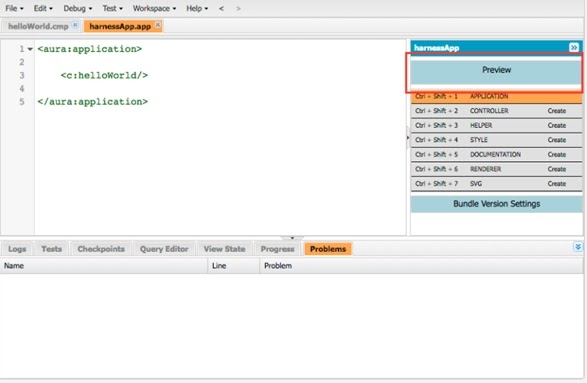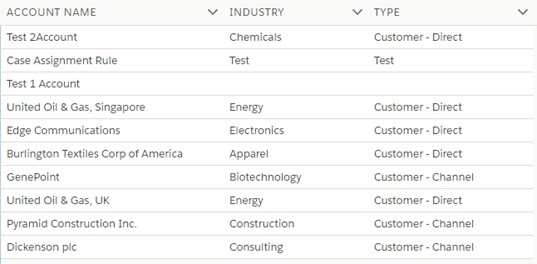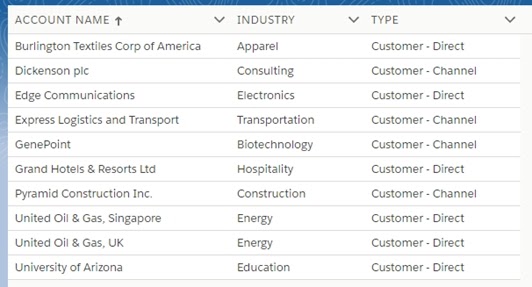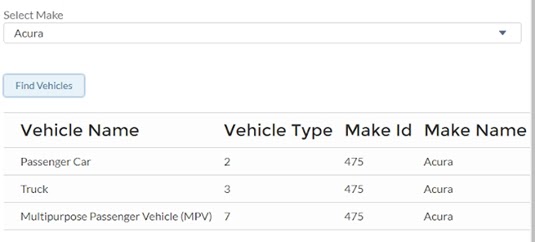
salesforce lightning
Last updated on 10th Oct 2020, Blog, Tutorials
What Is Salesforce Lightning?
Salesforce Lightning is a component-based app development platform from Salesforce.com. The design simplifies the processes of business users that act conveniently for all those with no prior knowledge of the programming language. It has a collection of tools and technologies behind Salesforce’s mobile app development platform called App Cloud. It helps to boost productivity, build apps faster, and optimize operations.
Subscribe For Free Demo
Error: Contact form not found.
Why should you learn Salesforce Lightning?
Salesforce Lightning includes Lightning component framework, which includes really exciting tools for the Salesforce developers. It makes it easier to build responsive applications for any device within fewer amounts of time and effort. Also, it provides a client-server framework that speeds up the development and improvise the application performance. On the other hand, the Salesforce Lightning App Builder gives you the power to build visual applications without using code, which is quicker than ever before using custom-built Lightning components. Lightning components can be used in Lightning App Builder so that admin can build custom user interface without using code.
Now, you must be wondering why Salesforce Lightning component is so popular and why everyone is talking about it? Well, here is your answer-
Salesforce Lightning is-
- Out-of-the-box component set
- Performance
- Event-driven architecture
- Faster development
- Device-aware
- Cross-browser compatibility, etc.
Introduction to Salesforce Lightning Platform
Salesforce Lightning is the upgraded version of Salesforce classic. It combines Lightning Design System (LDS), Lightning Tap Builder, and Lightning Components to create modern enterprise applications. It can be very useful in the generation of leads, improving sales, closure of deals, marketing domain, customer service analysis, etc.
Salesforce Lightning Layout in Salesforce is given below: –
Salesforce Lightning has three main types. Salesforce 1 was introduced for mobile application and two-user interface for the desktop version, whereas, Salesforce Classic and Salesforce Lightning Experience has been introduced by Salesforce dot com.
Salesforce Lightning Classic
Actually, Salesforce Lightning Classic is an older UI of Lightning. Here, SF developer can get customized dashboards and landing page components.
Salesforce Lightning Experience
Salesforce Lightning Experience or LEX, in short, brings an entirely new client-side architecture which departs from server-side rendering for its predecessor (that is Salesforce Classic) and Visualforce. It is for the first time, Salesforce developers can now use the same technology, and theme Salesforce has used to build their LEX based applications, known as the Lightning Framework. Salesforce has also chosen to open source their styling framework used by Lightning, which is known as the Lightning Design System (LDS).
Features of Salesforce Lightning Experience (LEX)
- Salesforce Lightning Experience is a modern, fast, and intelligent user interface
- It is built with a sales-centric mindset, focusing on helping sales representatives work more naturally daily
- With Lightning Experience, Salesforce users will get an intuitive and intelligent user interface
- Lightning Experience is built with proven Salesforce1 Mobile App technology
- Sales representatives can use mobiles to enter customers details like log tasks and notes after client meetings, run reports and dashboards, and many more. All these features from the mobile are being brought into the computer web browser by Salesforce Lightning Experience
Salesforce Lightning Component
Components are said to be self-contained and reusable units of an application. Any lighting application built using these small Salesforce Lightning Components and these components is reusable. But remember-
- Lightning components have .cmp extensions
- Lightning components are based on the concept of web components
- It uses Apex, JavaScript, HTML, and CSS to build Salesforce lightning app
Benefits of Salesforce Lightning
- Grouped Record View: Drive the right behaviors at every stage of your sales process with a Grouped view for record pages. Reps work their deals more efficiently with opportunities that promote the right action at the right time. Accounts and contacts drive customer insights, easy access to details, and clean data with field-level duplicate matching.
- Activity Timeline: See open tasks, planned meetings, and accomplishments in the activity timeline on activity-enabled objects. Quickly log calls, create tasks, send emails, and more from the handy composer.
- Task Lists: See details about specific tasks alongside the full list of open tasks, tasks due today, and closed tasks. Managers see tasks assigned to people below them in the role hierarchy.
- Enhanced Notes: Take better notes with auto-save, rich text capabilities, inline images, and versioning. Relate a note to multiple records and share notes with teammates or Chatter groups.
- Integrated Email: Related email messages to multiple contacts, leads, and users, and to a single opportunity, campaign, case, account, or person account. Send an email through Gmail or Office 365 accounts with your Salesforce email. And see the email messages you’ve sent in your Gmail or Office 365 Sent Items folder for flawless integration.
- Composer Windows: Breeze through those minor but important activities that inevitably crop up during the day without switching context. Quickly log calls, create tasks and events, and jot down notes, all from windows that open on the current page.
- File Preview Player: Enjoy a richer file preview experience that doesn’t require Adobe Flash Player. Vector-based preview images render in higher quality and don’t degrade on high-resolution screens, plus they load faster. Scroll through multi-page documents, preview animated GIFs, give full-screen presentations, and access file actions.
- Live Feeds: See live posts in group feeds and live comments in all feeds without refreshing the page. See who’s commenting while they’re typing.
- Post Pinning: Highlight high-impact posts that otherwise get buried in a busy feed by pinning them to the top of group and topics feed.
- Draft Posts: Draft posts are automatically saved to the My Drafts feed every seven seconds. Review, edit, post, or delete drafts.
- Reports and Dashboards: Get more from your data. The report run page is easy to read and filter. Animated, interactive charts bring your company’s data to life. And a new dashboard editor supports flexible layouts and components that span columns and rows.
- Favorites: Create shortcuts to frequently accessed pages, including records, lists, and groups.
- List Views: Seamlessly create and edit custom list views to quickly find relevant data. Search on-the-fly for specific list views. Visualize data with handy list view charts, or apply filters to slice the data as needed.
- Search: Find records faster with improved global search, which includes top results and recent records.
- Setup Tree and Object Manager; Navigate setup pages with a simplified organization and a cleaner look and feel. Use the Object Manager, which combines all standard and custom objects into a single list that’s easier to search.
Salesforce Lightning Experience
Salesforce worked with another interface, immediately before the Lightning experience, and that was named as Salesforce Classic.
Moving your business to Salesforce’s Lightning Experience creates a user experience that helps to transform your business by improving productivity and workflow and makes your jobs – easier and intuitive.
Salesforce allows the user to make the transition to the Lightning Experience while allowing to use Salesforce Classic at the same time. It makes a compelling case for decision-makers and leadership and sets your business into a transition in a well-thought way. It eliminates the older problems with a re-evaluation of existing customizations.
Here are the key benefits for the users of Salesforce Lightning Experience:
- Switch between custom-branded Apps along with efficient navigation.
- New Record Layouts that focus on what you can do.
- Visualize your data with turbocharged list views that enable the user to filter easily.
- Provide unique dashboards with components spanning across both columns and rows.
- View important data with quick-to-filter report views.
- Quickly access productivity like Notes and Recent Items in the Utility Bar.
Here is a figure that displays Salesforce Lightning Experience:
Some areas in which Salesforce Experience works well are:
1) Opportunity Workspace
It enables your sales reps to work smarter and faster with the deals. Enabling your sales process to work well in an action-optimized workspace and customizing the coaching scripts in every step of the sales process will close the deals at a faster rate by creating records at a faster rate but with fewer clicks.
Here is an image for the opportunity workspace:
2) Accounts and Contacts
Optimizing the layouts for accounts and contacts and organizing the content as per use case reference will help the sales reps to gather insights at a glance.
Here is an image that displays the accounts and contacts workspace:
3) Reports and Dashboards
The users can create filters while viewing a report. The updated dashboard editor helps the users to use components for both columns and rows.
The below image displays the reports and dashboards:
Lightning Component Framework
Salesforce Lightning component framework is an open-source UI framework for web development to create single-page web apps for mobile devices and desktop devices.
There are two programming models for building Lightning components–Lightning web components and the Aura components. Lightning components comprise various resources as listed in the below chart:
| Resource | Usage |
|---|---|
| Component/Application | The only required resource in a bundle, contains mark-up for the component or app. Each bundle comprises a single component or app resource. |
| CSS Styles | Component’s style |
| Controller (JS) | Client-side controller methods to handle events in the component. |
| Design | Required for components used in the Lightning App Builder or Lightning Pages. |
| Helper (JS) | JavaScript functions that can be called from any JavaScript code in a component’s bundle. |
| Documentation | A description, sample code, and one or multiple references to example components. |
| Renderer | Client-side renderer to override default rendering for a component. |
| SVG | Custom icon resource for components used in the Lightning App Builder. |
Lightning web components use HTML and JavaScript for the creation of custom HTML elements. It uses JavaScript on the client-side and Apex on the server-side for the creation of single-page, dynamic web applications. The users use Salesforce CLI and the chosen code editor. On the other hand, the Aura Components use the Developer Console. The Lightning component acts as a subset of the Aura component.
First, let us delve into how to create Lightning Components.
How To Create A Lightning Component
Create a Lightning Component by navigating to the Developer Console and following the path mentioned below:
File ->New-> Lightning Component
It comprises HTML and Aura Components supported by Salesforce. Specify ContactList as the bundle name and click submit.
The user follows the requisite steps mentioned below:
- 1. Create ContactList Controller Class
- 2. Create QuickContacts Lightning Component
- 3. Create ContactList Lightning Component
Create a Lightning component for displaying the list of contacts and then add the component to the QuickContacts component. The ContactList Component gets implemented as follows:
- <aura:component controller=”ContactListController”>
- <aura:attribute name=”contacts” type=”Contact[]”/>
- <aura:handler name=”init” value=”{!this}” action=”{!c.doInit}” />
- <ul>
- <aura:iteration items=”{!v.contacts}” var=”contact”>
- <li>
- <a href=”{! ‘#/sObject/’ + contact.Id + ‘/view’}”>
- <p>{!contact.Name}</p>
- <p>{!contact.Phone}</p>
- </a>
- </li>
- </aura:iteration>
- </ul>
- </aura:component>
Benefits Of Lightning Web Components
Some benefits of Lightning Web Component are enlisted below:
1) Business-ready Component Ecosystem
It creates business-ready components and makes them useful for the Lightning experience, Salesforce app, and Communities. The navigation menu allows the app users to access the components. Make use of the drag-and-drop components in the Lightning page with the Experience Builder or the Lightning App Builder, serving the purpose of customizing Lightning experience or Communities.
Moreover, AppExchange has additional components for your organization. Finally, it becomes possible to share and publish the components with other users.
2) Out-of-the-box Components
There is no need to optimize your apps for multiple devices because the components take care of everything with no need to waste your time.
3) Faster Development
Enable your team to work faster, with the out-of-the-box components that function well with both -mobile and desktop devices. Overall Development efficiency increases by building apps with a component for a parallel-design. Consumers view the public shape of the components as the components get encapsulated and the internal stay private.
4) Cross-browser Compatibility
The Apps developed supports the latest in browser technologies of the likes of CSS3, HTML5, and touch events while using responsive design.
Salesforce Lightning Framework
Salesforce Lightning Component is a User Interface (UI) based framework developed to create dynamic Salesforce web applications for mobile and desktop devices. Lightning components are built by a Salesforce Developer, and those components are then assembled by Salesforce administrator to form a Salesforce Lightning page. The Salesforce Lightning Framework is most popular because of the following reasons: –
- 1. Salesforce Lightning component Framework provides the components to build applications faster. No need to begin from scratch.
- 2. Salesforce Lightning component Framework tacks browser outlets when a user clicks a button, scrolling, and many more.
- 3. Our components can be published and shared with other Salesforce users.
- 4. It used JSON to exchange data between the server and the client.
- 5. Salesforce Lightning Component Framework supports the latest browser technologies like HTML5, CSS3, and touch events.

Let me clear here that Salesforce Lightning Component Framework is build using open source Aura framework. Open Source means something that has free availability. Whilst building Salesforce Lightning application, Aura keyword is used many times. See example below:-

Salesforce Lightning Page
Salesforce Lightning page is a custom layout that lets you design pages for the use in the Salesforce mobile app or Salesforce Lightning Experience.
Salesforce Lightning pages occupy a middle ground between page layouts and Visualforce pages. Like a page layout, Lightning pages allow you to add custom items to a page. However, these items, instead of being fields or Visualforce components, are Lightning components, which allow much more flexibility.
The structure of a Lightning page revamps for the device on which it is viewed. The Lightning page’s template divides the page into various regions-

Lightning pages are built using Lightning components—compact, configurable, and reusable elements that you can drag and drop into regions of the page in the Lightning App Builder.
You can use Salesforce Lightning page to create an application page which you can add to the Salesforce mobile application navigation list or a Lightning application’s navigation bar. An application page gives quick access to the objects and items that are most important in the Salesforce application.
You can also use a Salesforce Lightning page to create a customized record or homepage for Salesforce Lightning Experience. If you have integrated Salesforce with Microsoft Outlook or Gmail, you can create a customized email application pane.
If you have a console app, you can create a Lightning page with pinned regions to let your users view and work with records while navigating between subtabs.

Lightning pages support the following components:
Standard Components
Standard components are Lightning components built by Salesforce.
- Required Editions-
- Lightning App Builder available in: both Salesforce Classic and Lightning Experience
- Lightning record, Home, and utility bar pages available in Lightning Experience
- Lightning app pages available in: both the Salesforce mobile app and Lightning Experience
- Email application pane pages available in: both Salesforce Classic and Lightning Experience
Custom Components
Custom components are Lightning components that you or someone else has created. With some configuration, custom Lightning components can work in the Lightning App Builder.
- Lightning App Builder is available in both Salesforce Classic and Lightning Experience
- Lightning record, Home, and utility bar pages are available in Lightning Experience
- Lightning app pages are available in both the Salesforce mobile app and Lightning Experience
- Email application pane pages are available in both Salesforce Classic and Lightning Experience
Available in: Group, Professional, Enterprise, Performance, Unlimited, and Developer Editions
Third-Party Components on AppExchange
The AppExchange provides a marketplace for Lightning components. You can find packages containing components already configured and ready to use in the Lightning App Builder.
Lightning App Builder
It represents a responsive grid system for the arrangement of containers on a page. A lightning:layout is a flexible grid system for arranging containers within a page or inside another container. The default layout is mobile-first and it can be easily configured to work on different devices.
Sample Code:
- <aura:component implements=”flexipage:availableForAllPageTypes” >
- <div class=”c-container”>
- <lightning:layout horizontalAlign=”center”>
- <lightning:layoutItem flexibility=”auto” padding=”around-small”>
- <ui:inputSelect multiple=”false”>
- <ui:inputSelectOption label=”All Types” text=”” value=”true”/>
- </ui:inputSelect>
- </lightning:layoutItem>
- <lightning:layoutItem flexibility=”auto” padding=”around-small”>
- <button class=”slds-button slds-button_brand”>Search</button>
- </lightning:layoutItem>
- <lightning:layoutItem flexibility=”auto” padding=”around-small”>
- <ui:button label=”New”/>
- </lightning:layoutItem>
- </lightning:layout>
- </div>
- </aura:component>
Output:

Lightning datatable in Salesforce Lightning Component
AccountList.cmp:
- <aura:component controller=”AccountListController”
- implements=”flexipage:availableForAllPageTypes,lightning:actionOverride,
- flexipage:availableForRecordHome,force:hasRecordId,forceCommunity:availableForAllPageTypes,
- force:appHostable” >
- <aura:attribute type=”Account[]” name=”acctList”/>
- <aura:attribute name=”mycolumns” type=”List”/>
- <aura:handler name=”init” value=”{!this}”action=”{!c.fetchAccounts}”/>
- <lightning:datatable data={!v.acctList}”columns=”{!v.mycolumns}”keyField=”id”hideCheckboxColumn=”true”/>
- </aura:component>
AccountListController.js
- ({ fetchAccounts : function(component, event, helper) {
- component.set(‘v.mycolumns’, [ {label: ‘Account Name’, fieldName: ‘Name’, type: ‘text’
- },
- {
- label: ‘Industry’, fieldName: ‘Industry’, type: ‘text’
- },
- {
- label: ‘Type’, fieldName: ‘Type’, type: ‘Text’
- }
- ]);
- var action = component.get(“c.fetchAccts”);
- action.setParams({ });
- action.setCallback(this, function(response){
- var state = response.getState(); if (state === “SUCCESS”)
- {
- component.set(“v.acctList”, response.getReturnValue());
- }
- });
- $A.enqueueAction(action);
- }
- })
AccountListController Apex Class:
- public class AccountListController {
- @AuraEnabled public static List < Account > fetchAccts()
- {
- return [ SELECT Id, Name, Industry, Type FROM Account LIMIT 10 ];
- }
- }
Output:

Sorting or Data Table in Salesforce
AccountList.cmp
- <aura:component controller=”AccountListController”
- implements=”flexipage:availableForAllPageTypes,lightning:actionOverride,flexipage:availableForRecordHome,
- force:hasRecordId,forceCommunity:availableForAllPageTypes,force:appHostable” >
- <aura:attribute type=”Account[]” name=”acctList”/>
- <aura:attribute name=”mycolumns” type=”List”/>
- <aura:attribute name=”sortedBy” type=”String” default=”Name”/>
- <aura:attribute name=”sortedDirection” type=”String” default=”asc”/>
- <aura:handler name=”init” value=”{!this}” action=”{!c.fetchAccounts}”/>
- <lightning:datatable data=”{!v.acctList}” columns=”{!v.mycolumns}” keyField=”id” hideCheckboxColumn=”true” onsort=”{!c.updateColumnSorting}” sortedBy=”{!v.sortedBy}” sortedDirection=”{!v.sortedDirection}”/>
- </aura:component>
AccountListController.js
- ({
- fetchAccounts : function(component, event, helper)
- {
- component.set(‘v.mycolumns’, [
- {
- label: ‘Account Name’, fieldName: ‘Name’, type: ‘text’, sortable: true}, {label: ‘Industry’, fieldName: ‘Industry’, type: ‘text’
- },
- {
- label: ‘Type’, fieldName: ‘Type’, type: ‘Text’
- }
- ]);
- var action = component.get(“c.fetchAccts”);
- action.setParams({ });
- action.setCallback(this, function(response){
- var state = response.getState();
- if (state === “SUCCESS”) {
- component.set(“v.acctList”, response.getReturnValue());
- helper.sortData(component, component.get(“v.sortedBy”),
- component.get(“v.sortedDirection”));
- } });
- $A.enqueueAction(action); },
- updateColumnSorting: function (cmp, event, helper) {
- var fieldName = event.getParam(‘fieldName’);
- var sortDirection = event.getParam(‘sortDirection’);
- cmp.set(“v.sortedBy”, fieldName);
- cmp.set(“v.sortedDirection”, sortDirection);
- helper.sortData(cmp, fieldName, sortDirection);
- }
- })
AccountListHelper.js:
- ({ sortData: function (cmp, fieldName, sortDirection)
- {
- var data = cmp.get(“v.acctList”); var reverse = sortDirection !== ‘asc’;
- data.sort(this.sortBy(fieldName, reverse)) cmp.set(“v.acctList”, data);
- },
- sortBy: function (field, reverse, primer)
- {
- var key = primer ? function(x)
- {
- return primer(x[field])
- } : function(x) {return x[field]}; reverse = !reverse ? 1 : -1; return function (a, b)
- {
- return a = key(a), b = key(b), reverse * ((a > b) – (b > a));
- }
- }
- })
AccountListController apex class:
- public class AccountListController {
- @AuraEnabled public static List
- < Account > fetchAccts()
- {
- return [ SELECT Id, Name, Industry, Type FROM Account LIMIT 10 ];
- }
- }
Output:

How to handle attribute value modification in Salesforce Lightning Components
The aura:valueChange event is used to handle attribute value change in lightning components in Salesforce.
Component:
- <aura:component implements=”force:appHostable”>
- <aura:handler name=”change” value=”{!v.strText}” action=”{!c.handleValueChange}”/>
- <aura:attribute name=”strText” type=”string” default=”Sample”/>
- <div class=”slds-box slds-theme_default”>
- <lightning:input value=”{!v.strText}” type=”text” label=”Text”/><br/>
- <lightning:button variant=”brand” label=”Update” onclick=”{!c.clickIt}”/> </div> </aura:component>
Controller:
- ({
- clickIt : function(component, event, helper)
- {
- component.set(“v.strText”, “Changing”);
- },
- handleValueChange : function (component, event, helper)
- {
- alert(“Changed strText ” + component.get(“v.strText”));
- }
- })
Output:

How to Display a Wrapper Class List in Salesforce Lightning Component?
- <aura:component implements=”forceCommunity:availableForAllPageTypes”
- access=”global” controller=”DPLightningHandler” >
- <aura:attribute name=”listVehicles” type=”WrapperClass.VehicleWrapper[]” />
- <ui:inputSelect aura:Id=”makeId” multiple=”false” label=”Select Make”>
- <ui:inputSelectOption label=”Acura” text=”acura”/>
- <ui:inputSelectOption label=”Audi” text=”Audi”/>
- <ui:inputSelectOption label=”BMW” text=”bmw”/>
- <ui:inputSelectOption label=”Honda” text=”honda”/>
- <ui:inputSelectOption label=”Hyundai” text=”hyundai”/>
- <ui:inputSelectOption label=”Mercedes Benz” text=”merc”/>
- <ui:inputSelectOption label=”Nissan” text=”nissan”/>
- </ui:inputSelect><br/><br/>
- <ui:button label=”Find Vehicles” press=”{!c.findVehicles}”/><br/><br/>
- <aura:renderIf isTrue=”{!v.listVehicles.length > 0}”>
- <aura:if isTrue=”{!v.listVehicles.length > 0}”>
- <table class=”slds-table slds-table–bordered slds-table–cell-buffer slds-max-medium-table–stacked”>
- <thead>
- <tr> <th><h2>Vehicle Name</h2></th> <th><h2>Vehicle Type</h2></th> <th><h2>Make Id</h2></th> <th><h2>Make Name</h2></th> </tr>
- </thead>
- <tbody>
- <aura:iteration items=”{!v.listVehicles}” var=”veh”>
- <tr> <td class=”slds-truncate” data-label=”Vehicle Name”>{!veh.VehicleTypeName} </td> <td class=”slds-truncate” data-label=”Vehicle Type”>{!veh.VehicleTypeId}</td> <td class=”slds-truncate” data-label=”Make Id”>{!veh.MakeId}</td> <td class=”slds-truncate” data-label=”Make Name”>{!veh.MakeName}</td> </tr>
- </aura:iteration>
- </tbody>
- </table>
- </aura:if>
- </aura:renderIf>
- </aura:component>
Lightning Controller:
- ({
- findVehicles : function(component, event, helper)
- {
- var action = component.get(“c.fetchInventory”);
- action.setParams({
- vehicleMake : component.find(“makeId”).get(“v.value”) });
- action.setCallback(this, function(response)
- { var state = response.getState();
- if (state === “SUCCESS”) {
- component.set(“v.listVehicles”, response.getReturnValue());
- } });
- $A.enqueueAction(action);
- } })
Apex Lightning Controller:
- public with sharing class DPLightningHandler {
- @AuraEnabled public static List < WrapperClass.VehicleWrapper >
- fetchInventory(String vehicleMake) {
- List < WrapperClass.VehicleWrapper >
- listVehicles = new List < WrapperClass.VehicleWrapper >();
- HTTPRequest req = new HTTPRequest();
- req.setEndPoint(‘https://vpic.nhtsa.dot.gov/api/vehicles/GetVehicleTypesForMake/’ + vehicleMake + ‘?format=json’);
- req.setMethod(‘GET’); HTTP objHTTP = new HTTP();
- HTTPResponse res = objHTTP.send(req); system.debug(‘Response is ‘ + res.getBody());
- JSONParser parser = JSON.createParser(res.getBody());
- System.JSONToken token; String text; parser.nextToken();// Eat first START_OBJECT {
- parser.nextToken(); // Eat token = FIELD_NAME;
- text = postalcodes parser.nextToken(); // Eat first START_ARRAY [ parser.nextToken(); // Eat the first object’s START_OBJECT
- {
- WrapperClass.VehicleWrapper obj;
- while ( ( token = parser.nextToken()) != null )
- {
- if ( ( token = parser.getCurrentToken() ) != JSONToken.END_OBJECT )
- {
- text = parser.getText(); if ( token == JSONToken.FIELD_Name && text == ‘MakeId’ )
- {
- token = parser.nextToken(); obj = new WrapperClass.VehicleWrapper();
- obj.MakeId = parser.getText();
- }
- else if (token == JSONToken.FIELD_Name && text == ‘MakeName’ )
- {
- token = parser.nextToken();
- obj.MakeName = parser.getText();
- }
- else if ( token == JSONToken.FIELD_Name && text == ‘VehicleTypeId’ )
- {
- token = parser.nextToken(); obj.VehicleTypeId = parser.getText();
- }
- else if ( token == JSONToken.FIELD_Name && text == ‘VehicleTypeName’ )
- {
- token = parser.nextToken(); obj.VehicleTypeName = parser.getText(); listVehicles.add(obj);
- }
- }
- }
- system.debug(‘listVehicles are ‘ + listVehicles); return listVehicles;
- }
- }
Apex Wrapper Class:
- public class WrapperClass {
- public class VehicleWrapper {
- @AuraEnabled public String MakeId {
- get;set;
- }
- @AuraEnabled public String MakeName {
- get;set;
- }
- @AuraEnabled public String VehicleTypeId
- {
- get;set;
- }
- @AuraEnabled public String VehicleTypeName {
- get;set;
- }
- }
- }
Output:

Conclusion
Salesforce is the dynamic provider of CRM applications in the world. The applications developed using Salesforce Lighting are easy to interact and are screen friendly as they can be used on desktop, mobile, or in tablets. It provides out-of-the-box components, event-driven architecture, architecture-driven framework, and better optimization option as compared to the older versions of Salesforce.
Are you looking training with Right Jobs?
Contact Us- Salesforce Tutorial
- Tableau Server Tutorial
- Salesforce Architecture Tutorial
- Salesforce Developer Tutorial
Related Articles
Popular Courses
- VM Ware Training
11025 Learners - Microsoft Training
12022 Learners - Siebel Training
11141 Learners
- What is Dimension Reduction? | Know the techniques
- Difference between Data Lake vs Data Warehouse: A Complete Guide For Beginners with Best Practices
- What is Dimension Reduction? | Know the techniques
- What does the Yield keyword do and How to use Yield in python ? [ OverView ]
- Agile Sprint Planning | Everything You Need to Know

